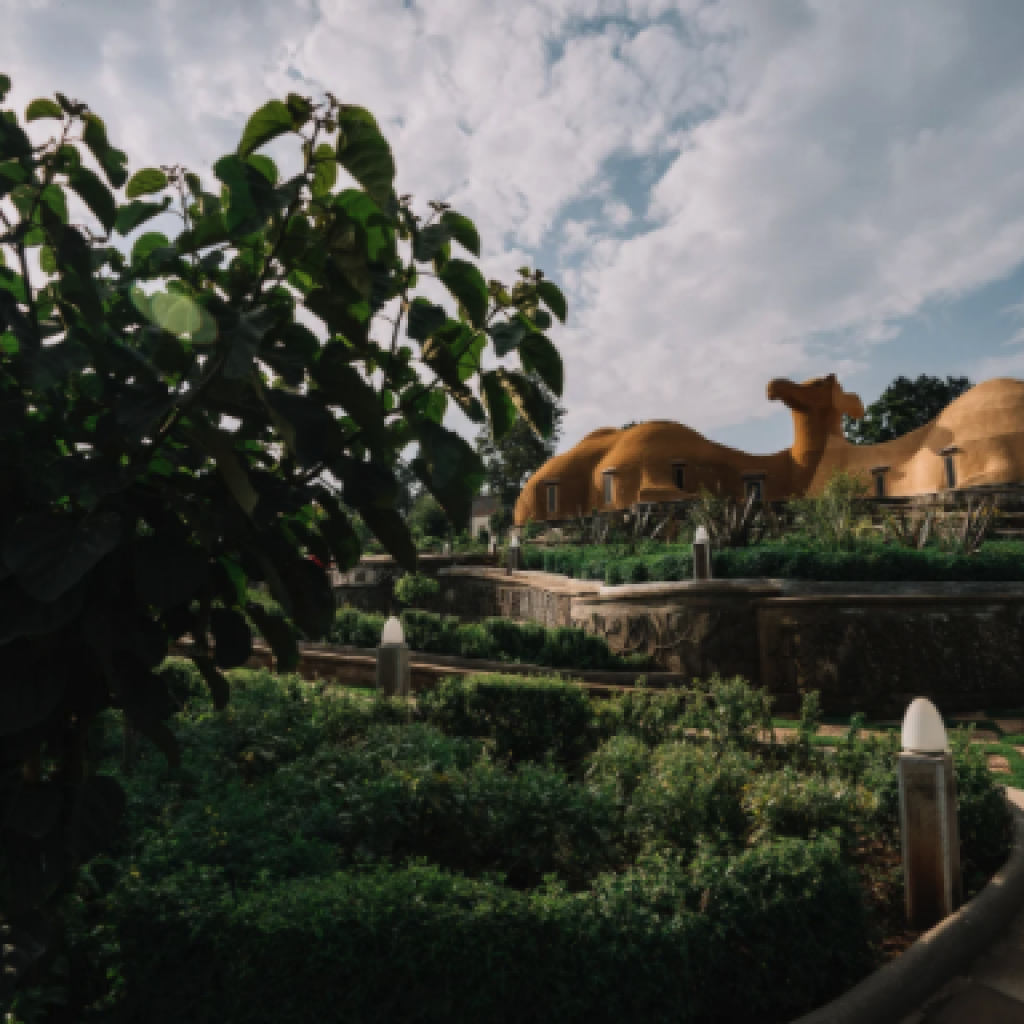
Ethiopia’s profile has risen in recent years. The introduction of an e-visa in late 2017, which made it easier to visit, boosted tourism by 48.6 percent, while Prime Minister Abiy Ahmed caught the world’s attention when he was awarded the 2019 Nobel Peace Prize. But even as visitors flocked to Ethiopia’s nine UNESCO World Heritage Sites, its historic capital city remained a mere stopover. Green spaces in the city were nonexistent and outdoor activities sparse—until now.
A multifaceted museum complex, Unity Park, opened in October 2019, stretching across 40 acres of the former 19th-century Imperial Palace grounds. Visitors can now walk alongside vibrant murals framing native plant and sculpture gardens and explore cultural pavilions showcasing Ethiopia’s nine regions. The “Faces in the Shade” exhibit provides a deeper look at the country’s history and details the Red Terror era, during which the communist Derg regime overthrew Ethiopia’s monarchy, with stories of torture from former political prisoners. And at Entoto Park, a groundbreaking new eco-recreational and wellness space set amid 3,200-acre eucalyptus tree forests, just a 20-minute drive north of the city, activities include hiking, biking, horseback riding, archery, paintball, go kart, and Ethiopia’s first zip line. Spend the night at the new Kuriftu Resorts, located inside the park, where you can glamp under a star-filled sky.
Visiting Addis Ababa also means passing through the world’s first contactless terminal at Bole International Airport, designed with an eye toward biosafety, and exploring Ethiopia’s rich Muslim heritage at Bilal Habashi Community Museum, which opened in May. The city’s momentum is set to continue, with additional parks under way. For the first time in decades, Addis Ababa is living up to its name: New Flower. —Lebawit Lily Girma





About The Author: David DiGregorio
More posts by David DiGregorio